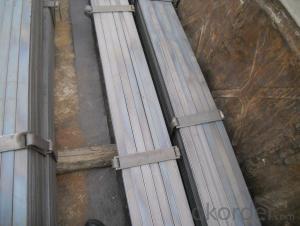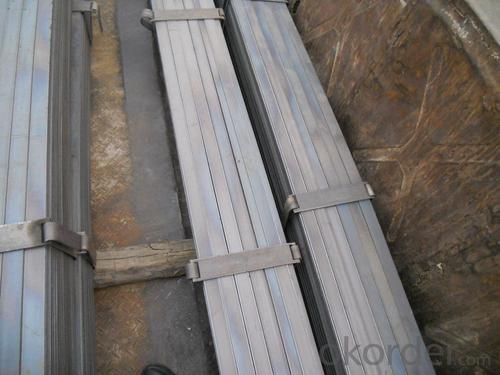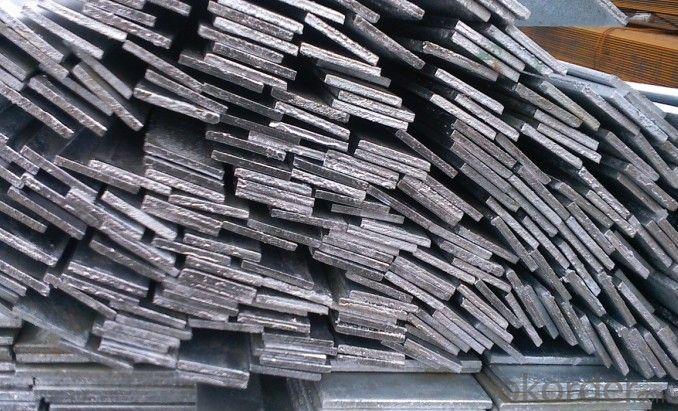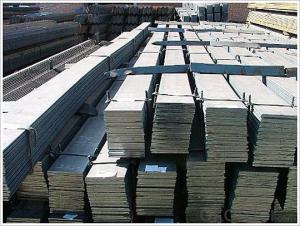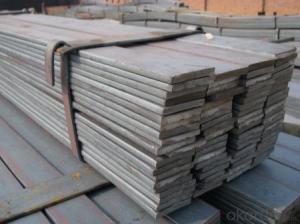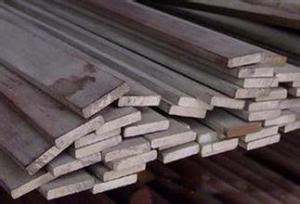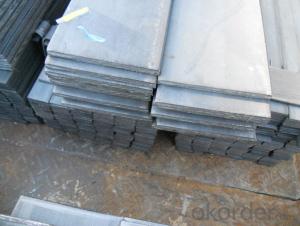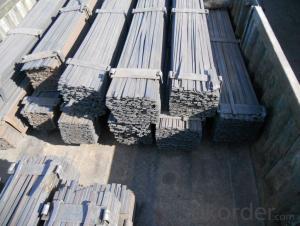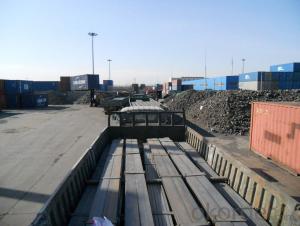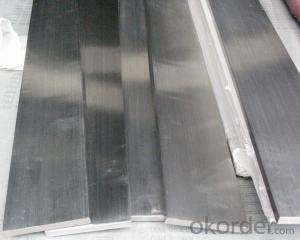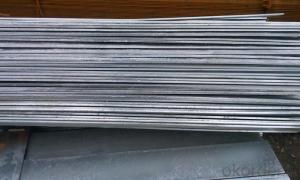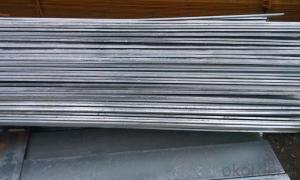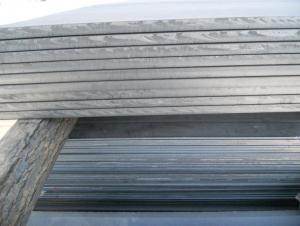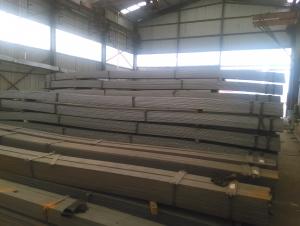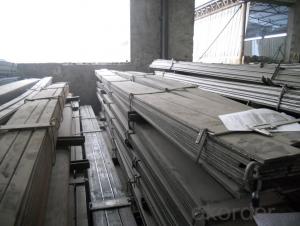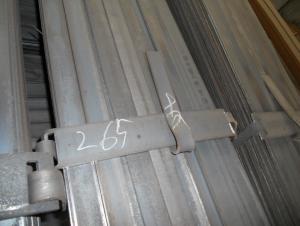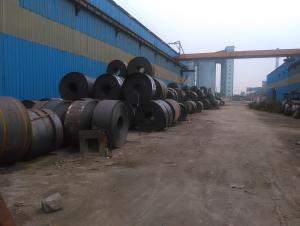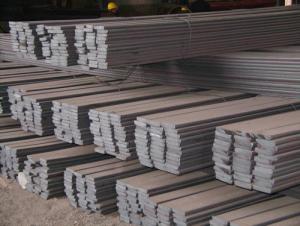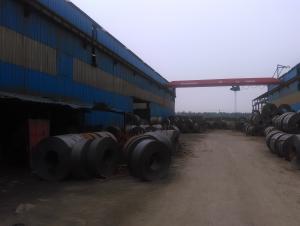flat bar
- Loading Port:
- China Main Port
- Payment Terms:
- TT OR LC
- Min Order Qty:
- -
- Supply Capability:
- -
OKorder Service Pledge
OKorder Financial Service
You Might Also Like
Product Description:
Specification of Mild Steel Flat Bar
Commodity: Mild Steel Flat Bar
Standard: GB;JIS
Material: Q195-235;SS400
Brand name: FLATSPACE
Origin place: China
Thickness: 3mm-30mm
Width:20mm-200mm
Length: Max 12m
Certification: SGS/BV
Chemical composition of Q235
Alloy No | Grade | Element(%) | ||||
C | Mn | S | P | Si | ||
Q235 | B | 0.12—0.20 | 0.3—0.7 | ≤0.045 | ≤0.045 | ≤0.3 |
Physical properties of Q235
Alloy No | Grade | Yielding strength point(Mpa) | Tensile strength (Mpa) | Elongation after fracture(%) | ||||||
Thickness (mm) | Thickness (mm) | |||||||||
≤16 | >16--40 | >40--60 | >60--100 | ≤16 | >16--40 | >40--60 | >60--100 | |||
≥ | ≥ | |||||||||
Q235 | B | 235 | 225 | 215 | 205 | 375--500 | 26 | 25 | 24 | 23 |
Usage/Applications of Mild Steel Flat Bar
Widely used for construction, Machinery manufacturing, Iron tower steel structure, Shipbuilding; Steel grating, Staircase, Bridge, Viaduct, Railway spare parts, Boilers making etc.
Packaging & Delivery of Mild Steel Flat Bar
Packaging Details: The Mild Steel Flat Bars are packed in bundles and loaded in 20 feet/40 feet container, or shipped by bulk cargo ,also we can do as customer's requirements.
Delivery Details:30~45 days upon the receipt of buyer payment by T.T. or L/C.
Production Flow of Mild Steel Flat Bar
The Mild steel flat bar is made through three processes:
1.Feeding the material: Feeding the row material (the steel plate) to Slitting Line.
2.Slitting:The steel plate would be slitted into expected width by lengthways cutter.
3. Leveled and cutting: The plat bar would be ground into level by the grinder and then cut into required length
- Q: Can steel flat bars be hardened or tempered?
- Steel flat bars can indeed undergo hardening or tempering. Hardening entails heating the steel to a specific temperature and rapidly cooling it, typically through water or oil quenching. This procedure alters the steel's molecular structure, resulting in heightened hardness and resistance against wear and deformation. Conversely, tempering takes place after hardening and involves reheating the steel to a lower temperature, followed by slow cooling. This step aids in alleviating internal stresses and enhancing the steel's toughness and ductility, rendering it less brittle and more suitable for certain applications. To achieve desired mechanical properties, both hardening and tempering can be employed on steel flat bars. It is important to note, however, that the particular hardening or tempering method and parameters may differ depending on the type of steel utilized and the desired outcome.
- Q: What are the different standards or specifications for steel flat bars?
- There are several different standards and specifications for steel flat bars, which outline the specific requirements and characteristics of these products. Some of the most commonly used standards include: 1. ASTM A36/A36M: This standard covers carbon structural steel shapes, plates, and bars of structural quality for use in riveted, bolted, or welded construction of bridges, buildings, and general structural purposes. It specifies the chemical composition, mechanical properties, and various other requirements for steel flat bars. 2. ASTM A572/A572M: This standard covers high-strength low-alloy columbium-vanadium structural steel shapes, plates, sheet piling, and bars for applications in bolted, welded, and riveted structures. It specifies the chemical composition, mechanical properties, and other relevant characteristics for steel flat bars. 3. ASTM A1011/A1011M: This standard covers hot-rolled carbon steel sheets, strips, and bars for general applications. It includes specifications for steel flat bars, including the chemical composition, mechanical properties, and other relevant requirements. 4. JIS G3101: This Japanese standard specifies the general requirements for hot-rolled steel plates, sheets, and strips used in general structural applications. It provides guidelines for steel flat bars, including the chemical composition, mechanical properties, and other important specifications. 5. EN 10025: This European standard specifies the technical delivery conditions for structural steel products, including steel flat bars. It outlines the requirements for steel grades, chemical composition, mechanical properties, and other relevant characteristics. These are just a few examples of the numerous standards and specifications available for steel flat bars. The choice of standard depends on the specific application and requirements of the project, ensuring that the steel flat bars meet the desired quality and performance standards.
- Q: Are steel flat bars commonly used in the transportation industry?
- Yes, steel flat bars are commonly used in the transportation industry. They are often used for constructing various components such as brackets, frames, and supports in vehicles like cars, trucks, and trailers. Steel flat bars are valued for their strength, durability, and versatility, making them a popular choice in transportation applications.
- Q: Can steel flat bars be used as support beams?
- Yes, steel flat bars can be used as support beams as they have high strength and load-bearing capacity. However, it is important to consider the specific requirements and structural calculations to ensure they are suitable for the intended purpose and meet the necessary safety standards.
- Q: Can steel flat bars be used for manufacturing sports equipment or accessories?
- Yes, steel flat bars can be used for manufacturing sports equipment or accessories. Steel is a strong and durable material that can withstand the rigors of sports activities. Flat bars made of steel can be shaped and formed into various products such as baseball bats, golf clubs, weightlifting bars, bicycle frames, and many others. The versatility of steel allows for customization and adaptation to specific sporting needs. Additionally, steel flat bars can be easily welded, providing further flexibility in the manufacturing process. Overall, steel flat bars are a suitable material for producing sports equipment and accessories due to their strength, durability, and ability to be shaped into desired forms.
- Q: Are steel flat bars available in different shapes, such as round or square?
- Steel flat bars are usually found only in a flat form. Nevertheless, if you require round or square steel bars, there are alternative types of steel bars specifically designed in those shapes. Round bars possess a cylindrical structure, whereas square bars feature straight, uniform sides that create a square shape. These various steel bar shapes are tailored for specific purposes and can be easily obtained in the market.
- Q: How do steel flat bars perform in terms of chemical resistance?
- Steel flat bars generally have good chemical resistance, especially when compared to other materials like wood or plastic. However, the exact level of resistance can vary depending on the specific type of steel and the chemical it is exposed to. In general, steel is resistant to many common chemicals such as water, mild acids, and alkalis. However, it may corrode or react with certain aggressive chemicals or environments, such as strong acids, bases, or saltwater. Therefore, it is important to consider the specific chemical environment and consult relevant material compatibility charts or experts to ensure the appropriate level of chemical resistance for a particular application.
- Q: Can steel flat bars be galvanized or coated with zinc?
- Yes, steel flat bars can be galvanized or coated with zinc. This process helps to protect the steel from corrosion and rust, extending its lifespan and enhancing its durability.
- Q: How do I calculate the weight of a steel flat bar?
- To calculate the weight of a steel flat bar, you need to know its dimensions and the density of steel. The weight can be calculated by multiplying the volume of the bar (length x width x height) by the density of steel, which is typically around 7850 kg/m³.
- Q: Are steel flat bars available in non-standard lengths?
- Certainly! Non-standard lengths for steel flat bars are readily available. Although steel flat bars typically come in standard lengths of 20 feet or 6 meters, numerous suppliers offer personalized cutting services to fulfill customers' precise length requirements. This feature enables customers to easily request steel flat bars in non-standard lengths, tailored to the specifications of their particular projects. By granting this versatility, suppliers accommodate a diverse array of demands and guarantee that customers obtain the precise length necessary for their applications.
Send your message to us
flat bar
- Loading Port:
- China Main Port
- Payment Terms:
- TT OR LC
- Min Order Qty:
- -
- Supply Capability:
- -
OKorder Service Pledge
OKorder Financial Service
Similar products
Hot products
Hot Searches
Related keywords
